I’m sure many Singaporeans will agree with me that Penang and Ipoh are two of the most popular destinations in Malaysia. After all, both cities have a ton of history and are famous as foodie hot spots. Personally, I had never been to these locations before (I know, right?), so I decided to book this 5D4N Penang/Ipoh/Kuala Sepatang Tour with WTS Travel for my maiden journey there.
For the tour, we took a flight with Singapore Airlines to Penang and then hopped between Ipoh, Kuala Sepetang, and Penang throughout the duration of the tour. Here’s what went down.
|
Looking to find out more about travelling to Penang, Ipoh, and Kuala Sepetang? Then don’t miss the Tourism Malaysia Roadshow happening from 25 Nov to 1 Dec 2024 at Jurong Point Shopping Centre, JP1 (Level 1, Centre Stage 3 in front of McDonald’s) from 11AM to 9PM daily. During this time, you can speak with travel experts from both Tourism Malaysia and WTS Travel to plan your dream getaway. Choose from a variety of packages or get some useful tips and tricks on planning the ideal itinerary to discover all that Malaysia has to offer. See you there! |
Day 1: Exploring Penang’s Colourful Cultural Heritage

Image credit: galitskaya via Canva Pro
We landed in sunny Penang around lunchtime and after clearing immigration, we stopped off at a bustling hawker centre for lunch. Obviously, being in Penang, I had to go straight for the char koay teow — smoky, savoury, creamy, it was simply perfect and definitely hit the spot!
Visiting the Clan Jetties and Khoo Kongsi
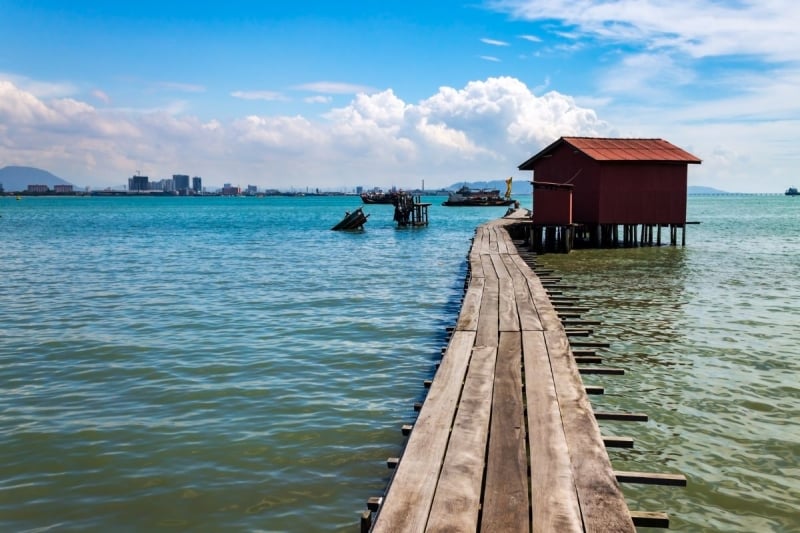
Image credit: Emmanuel Chansarel-Bourigon via Canva Pro
After lunch, it was off to discover all that Penang has to offer. Since we were already in the popular Georgetown area, we started off by hunting down the famous street murals in the area. I heard that the original artist had recently repainted the murals, so they looked more vibrant than before. You’ll know you’re in the right place when you see a long line of tourists (and locals) waiting for their chance to take a photo with some of the more Insta-famous murals.
After snapping away on our phones, we headed to another one of the famous locations in Penang — the Clan Jetties. Stepping into this historical area was like stepping into a living museum. After all, this was where Chinese immigrant families in the past used to live upon reaching the island. The jetties were lined with colourful stilt houses, and the narrow wooden walkways added a picturesque vibe to the place. There are also restaurants here selling some of the freshest seafood in town!
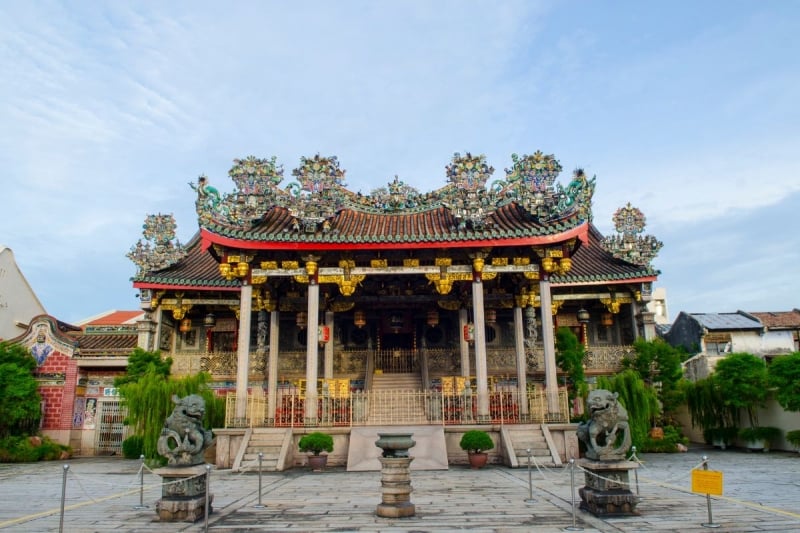
Image credit: greenleaf123 via Canva Pro
After bidding farewell to the Clan Jetties, we headed across the street to the Khoo Kongsi, a magnificent clan house that showcases the longstanding nature of Penang’s Chinese heritage. Its serene atmosphere and intricate architecture are a far cry from the bustling city that surrounds it. Apart from Insta-worthy photo spots, the Khoo Kongsi also allows visitors the opportunity to learn more about the Khoo clan, one of the most notable Chinese clan associations in Malaysia, with a lineage dating back 600-plus years!
Immersing in Nyonya heritage at Pinang Peranakan Mansion
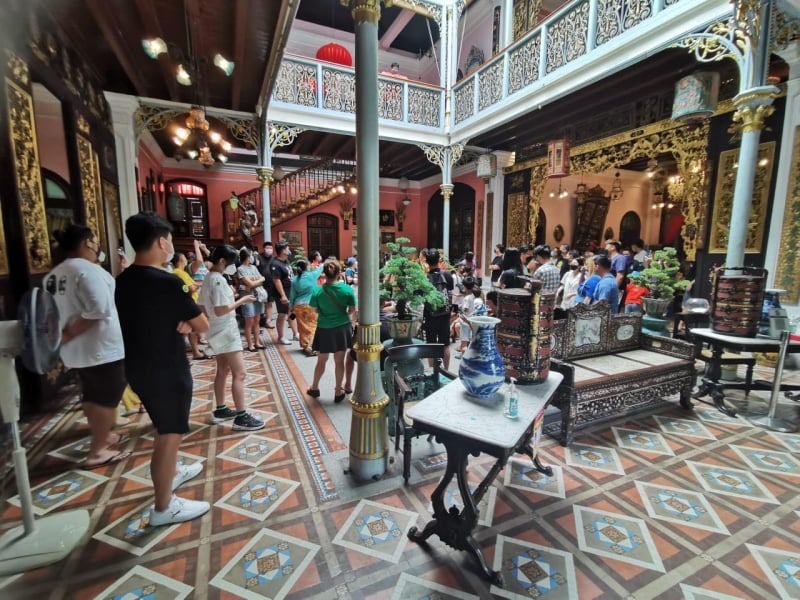
Image credit: Pinang Peranakan Mansion Official Facebook Page
Our next stop was the unique Pinang Peranakan Mansion (also called the Peranakan Museum). Housed in a stunning Peranakan mansion from the 1900s, the museum is a treasure trove of Peranakan art, antiques, and artefacts. As I strolled through the various rooms of the house, I couldn’t help but admire the intricate details and vibrant colours of Peranakan craftsmanship, ranging from traditional outfits and furniture to jewellery.
What I liked most was how each exhibit was separated into different rooms with accompanying decor. As you delve into the exhibits, you’ll get a sneak peek of what life was like for the Peranakan communities of old Penang.
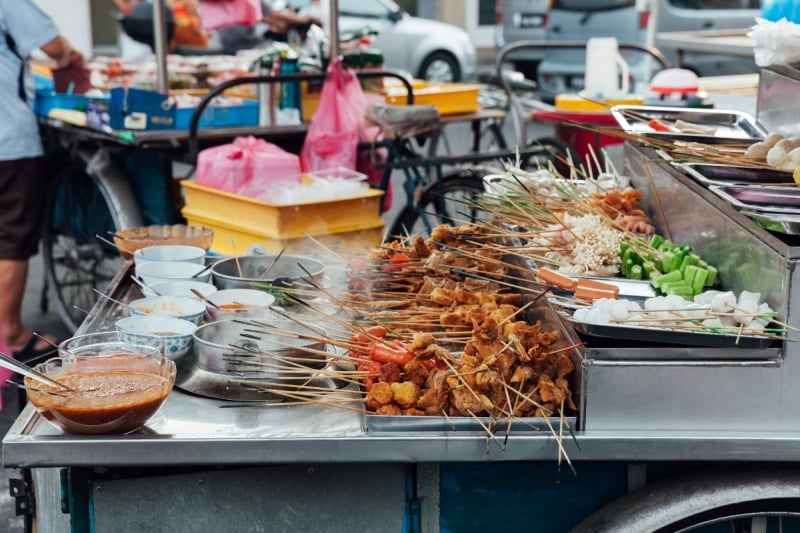
Image credit: ErmakovaElena via Canva Pro
After leaving the mansion behind, we headed to one of Penang’s most popular night markets, the Kimberley Street Food Night Market for dinner. Imagine endless rows of food carts on either side of the road, with mouthwatering aromas filling the air at every turn. Personal recommendation here? The juicy oyster omelette (oh-chien) and duck kway chap. You really can’t go wrong with these popular eats, and you can’t miss them too. Just look for the long lines!
After dinner, we finally arrived at our hotel where I treated myself a well-deserved night’s rest.
Day 2: The hidden gems of Kuala Sepetang
Day 2 began with breakfast at the hotel before we boarded our bus to Kuala Sepetang, a lesser-known travel gem in Malaysia.
Checking out Kuala Sepetang’s mangrove forests
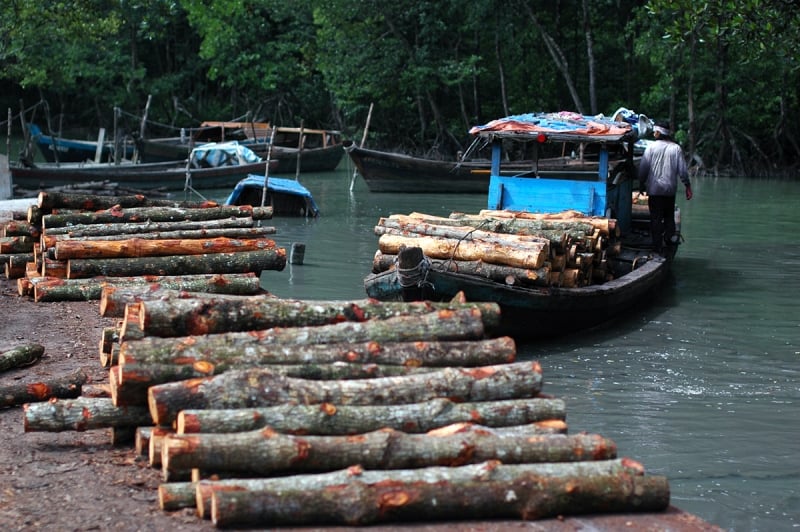
Image credit: udeyismail | Wikimedia Commons
Located in the district of Larut, Matang and Selama District, this bustling fishing village in Perak is also known as Port Weld. Unbeknownst to many travellers (and even some locals), Kuala Sepetang is home to a multitude of natural wonders and rich history.
Upon arriving in the serene town, we first headed to the old charcoal factories area, nestled within the Matang mangrove forest. Here, there are over 100 family-owned charcoal factories that date back generations to the 1930s, when it first became the cornerstone of the local economy. We visited the MY Charcoal Factory where we were given a tour of the factory, learning about the charcoal-making process, from harvesting mangrove wood to sorting and packaging.

Image credit: SHANGCHIEH | Flickr
After the factory tour, we were also able to visit the mangrove forest where wood for charcoal is harvested. It was fascinating exploring the area as we don’t often get that opportunity in Singapore. We then hopped on a boat and cruised along the river next to the Fisherman Village, observing the locals as they went about their daily business. By noon, our tummies were rumbling, so we stopped by the Kuala Sepetang Fish Farm, known for cage breeding culture, where we were treated to incredibly delicious tilapia!
Journey to Ipoh
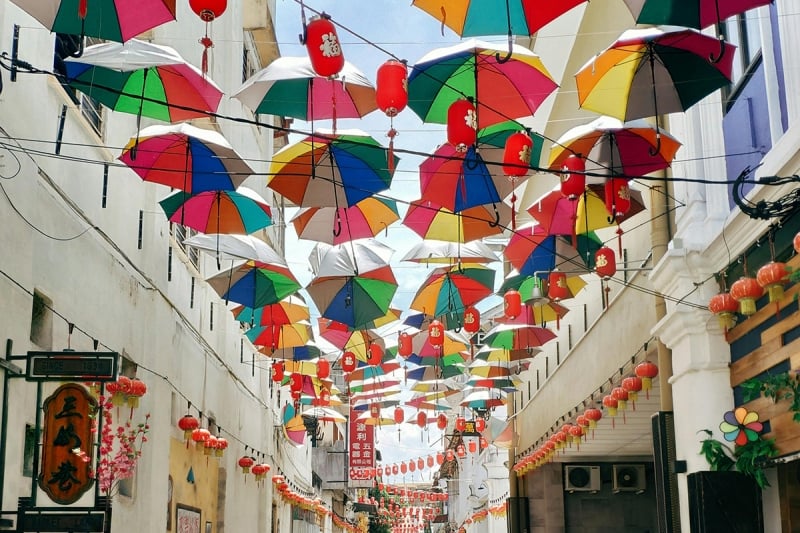
After the succulent lunch and docking back at shore, we were back on the road as we headed towards the famous city of Ipoh, another one of Malaysia’s popular food gems. Unsurprisingly, our first stop in the city was the Insta-worthy Concubine Lane, a colourful alleyway in the heart of Ipoh Old Town that is full of history and lined with trendy shops, cafes and galleries. The moment I arrived, I couldn’t stop snapping away on my phone — the classic ambience of the area was matched by the beautiful street decor, especially the umbrellas and Chinese lanterns.
We spent quite a while exploring every nook and corner of the rustic old town district: hunting down vibrant art murals, visiting shops that have been in operation for generations, and thronging the bustling Kong Heng Square Artisan Market. We also got to see the historical “Golden Triangle”, a trio of colonial buildings known for their eye-catching white exteriors.
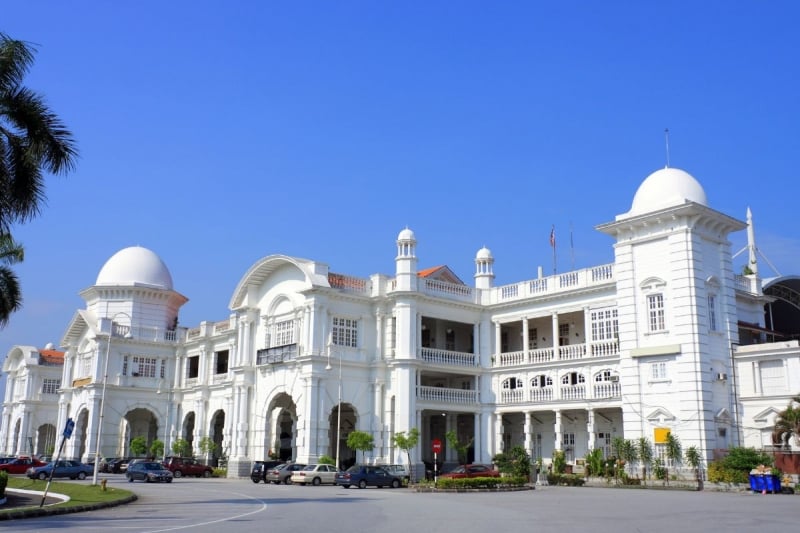
Image credit: mauhorng via Canva Pro
Of course, when in Ipoh, one mustn’t pass up the opportunity to visit the famous Thean Chun Coffee Shop, known for its delicious chicken hor fun and silky smooth egg custard.
After a long day of travelling on the road, we retired to our hotel for some well-deserved rest after dinner.
Day 3: Visiting Ipoh’s famous attractions
On day three, after a hearty breakfast at the hotel, we hopped on a transfer to one of Ipoh’s well-known pomelo farms (Ipoh is famous for its juicy pomelos). The orchard that we visited was called the Tambun Pomelo GoChin Agro Farm, about 15 minutes away from the Ipoh Old Town area.
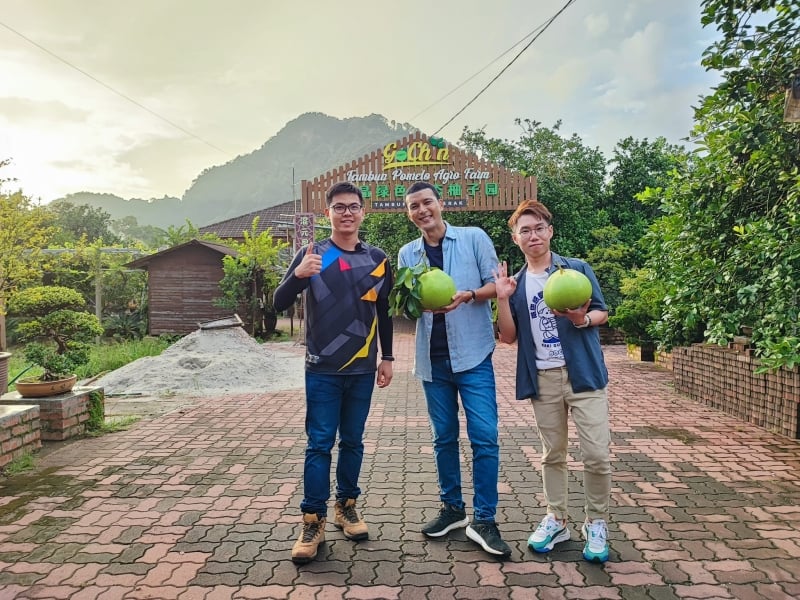
Image credit: Tambun Pomelo GoChin Agro Farm Facebook Page
There, we were greeted by the owner of the orchard and given a quick tour along well-maintained walking tracks. Apparently, the oldest tree on the farm is more than 50 years old, and is said to bear the juiciest pomelos! My favourite part of the tour was being able to sample the fresh local fruits at the orchard. Apart from pomelo, they also have a variety of guava and starfruit to offer.

Image credit: RAVINDRAN JOHN SMITH via Canva Pro
Our next stop was arguably one of Ipoh’s most picturesque locations — the Kek Lok Tong Cave Temple and Zen Gardens. The main attraction here is the historical Buddhist temple housed within a giant limestone cave adorned with stunning stalactite and stalagmite formations. Even before entering the cave, I was awed by the scenery on the outside. Picture verdant greenery surrounding a majestic limestone cliff; it was a peaceful ambience indescribable through words alone.
Inside the dimly lit and cool cave chamber, you’ll find various Buddha statues and one of Kwan Yin, the Goddess of Mercy. It’s easy to see why the location is one of Ipoh’s most famous tourist hot spots, given the ambience and the beauty of the temple. Honestly, I didn’t want to leave!
Discovering a hidden tea valley and Ipoh’s Insta-famous historical landmark
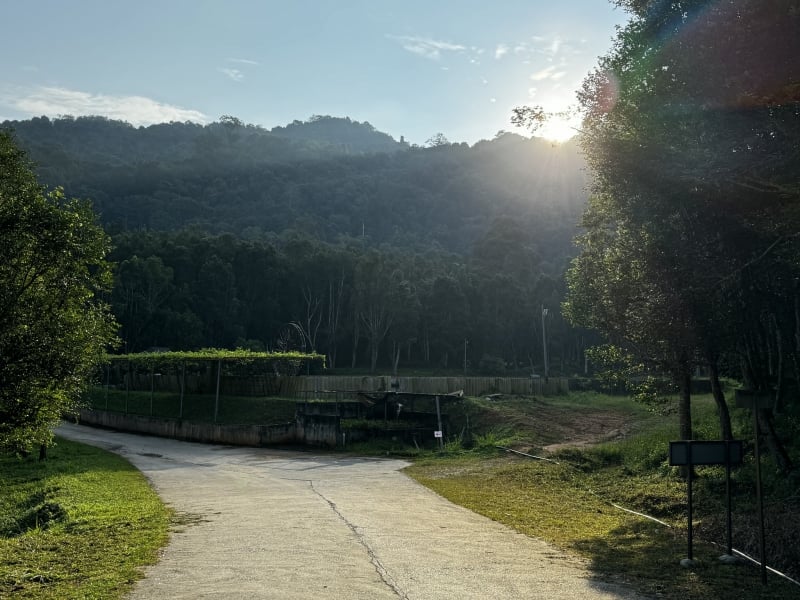
Image credit: HOGA Gaharu Tea Valley Gopeng Facebook Page
After visiting Kek Lok Tong Temple, our next stop was the Gaharu Tea Valley in Gopeng. The brainchild of a Japanese botanist and Malaysian entrepreneur, the tea valley is the first organic sustainable Gaharu plantation in Malaysia. Cultivating Agarwood trees on fertile soil, the plantation produces some of the finest teas in the country.
Gaharu Tea Valley also doubles up as a tourist attraction, with a hilltop cafe that provides stunning views of the valley. As I looked out at the sight of 200,000 Agarwood trees on the plantation, their verdant leaves shimmering in the sunlight, a sense of serenity washed over me.
There’s also a mini museum (the HOGA Time Tunnel) that shares the history of the plantation, from its founding up till now. Before leaving, I snapped up a few Agarwood products (my parents are huge fans) at the gift shop.
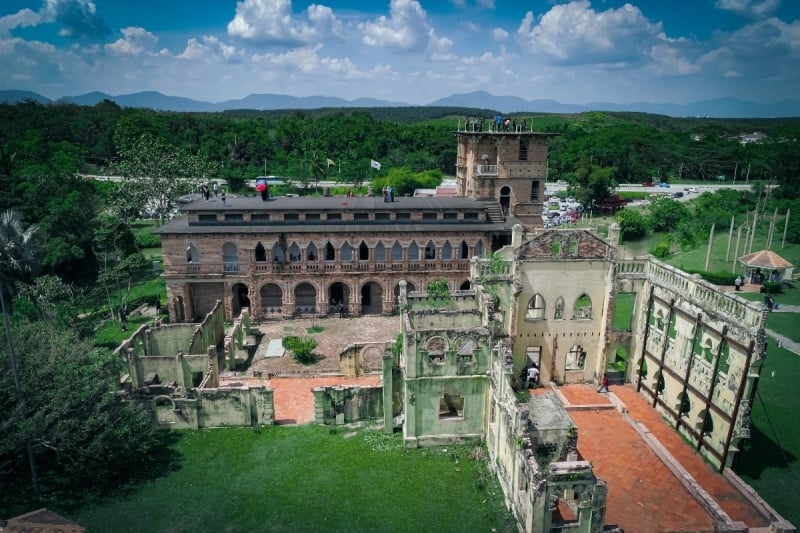
Image credit: Jalaluddin Abdul hilmi via Canva Pro
Next, we headed back to Ipoh’s most iconic landmark — Kellie’s Castle. Located in Batu Gajah, this architectural marvel was the ambitious project of a Scottish planter who started construction in the early 1900s but remains unfinished to this day. Despite that, its enigmatic exterior draws tourists from both near and far to stop for a quick tour and photos.
We then headed back to the city centre where we dug into Ipoh’s famous curry chicken bread — savoury curry chicken baked in foil inside a huge loaf of bread. It was a delicious and unique sight to behold. What you do is break off the pieces of bread and dunk them into the spicy curry. The combination of flavours is simply incredible! If I had a bigger tummy, I would have gone for a second round for sure!
Day 4: Back to Penang
Day four of this 5D4N Penang/Ipoh tour was easily my favourite even though we didn’t include as many stops as the previous few days. In the morning, we boarded our transport back to Penang, arriving around lunchtime. For lunch, we went to a restaurant serving Penang’s famous Nyonya cuisine.
Penang Hill + Kek Lok Si
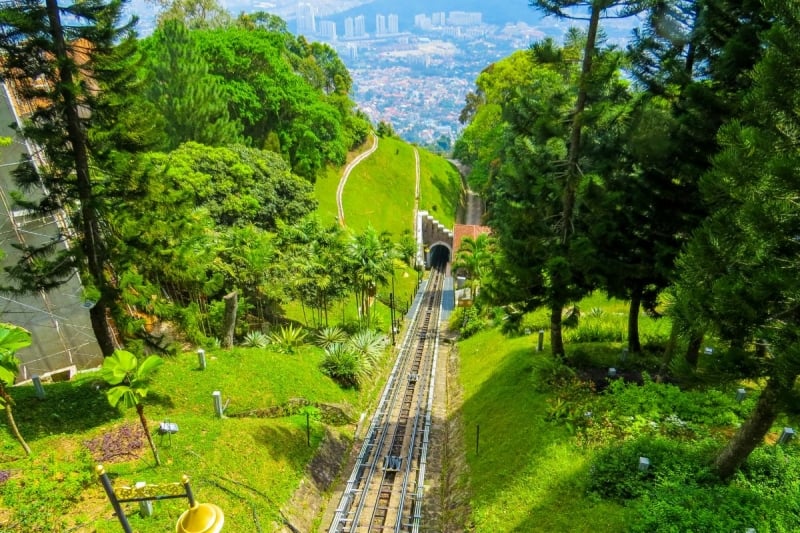
Image credit: Diego Fiore via Canva Pro
After filling our bellies, we headed to the foot of Penang Hill, where we boarded a Funicular to the peak. There, we got to enjoy a stunning view of the city below. There were also a handful of shops selling various deserts and a few interactive museums. I had wanted to also visit The Habitat, a nature reserve located at the top of Penang Hill, but we simply didn’t have the time to. I made a mental note to visit the next time I’m back.
Despite that, we had plenty of fun at Penang Hill, taking in the views and visiting the various attractions there, including a mini skywalk which offered views of the distant Penang Bridge (thankfully it was a clear, sunny day).
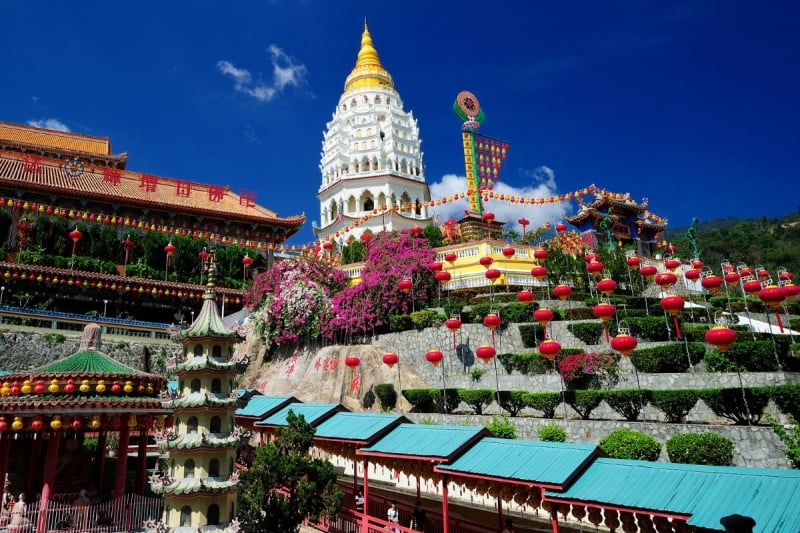
Image credit: RAVINDRAN JOHN SMITH via Canva Pro
After about an hour or so (maybe a bit more), we made our way down the hill and headed towards one of the most majestic Buddhist temple complexes in Southeast Asia — the stunning Kek Lok Si. During the Lunar New Year, Kek Lok Si is often packed to the brim! Luckily, we were visiting during the “low season”, so there were fewer tourists at the complex, which was great because I had the time and freedom to explore the location at my leisure. My favourite attraction was the Pagoda of Ten Thousand Buddhas, a collection of tiny Buddha statues with various expressions.
Dinner at Gurney Drive
After the visit to Kek Lok Si, our tour took us to one of Penang’s most crowded shopping and eating spots: Gurney Drive. Here, there were a ton of food options to choose from, ranging from local favourite seafood restaurants to hawker centres. We also visited Gurney Plaza, one of Penang’s top shopping malls, and the adjacent Gurney Paragon, which is home to one of the largest BookXcess (book store) outlets in the country.
After an evening of shopping and eating, we retired to our hotel for the night.
Day 5: Back to Singapore
After breakfast, I decided to explore the area I was in for a bit. Since we stayed in the George Town area, there were plenty of souvenir shops and food spots to explore. I stopped by the Hin Bus Depot, an independent gallery showcasing Malaysian art which doubles up as an artisan market on Sundays.
After treating myself to a cold drink (it was quite hot in Penang when I visited), I headed back to my hotel and boarded the transfer to the airport for my flight home.
All in all, this 5D4N Penang/Ipoh trip was well worth the journey. Not only was I able to check out the popular spots I often see on social media, but I also got to visit hidden gems most travellers (and even some locals) don’t seem to know much about. Best of all, everything was taken care of in terms of logistics, so all I had to do was enjoy myself. Highly recommended!
|
Looking to find out more about travelling to Penang, Ipoh, and Kuala Sepetang? Then don’t miss the Tourism Malaysia Roadshow happening from 25 Nov to 1 Dec 2024 at Jurong Point Shopping Centre, JP1 (Level 1, Centre Stage 3 in front of McDonald’s) from 11AM to 9PM daily. During this time, you can speak with travel experts from both Tourism Malaysia and WTS Travel to plan your dream getaway. Choose from a variety of packages or get some useful tips and tricks on planning the ideal itinerary to discover all that Malaysia has to offer. See you there! |
Brought to you by Tourism Malaysia and WTS Travel




